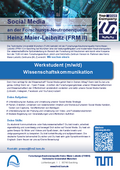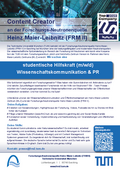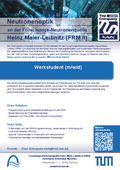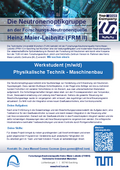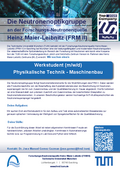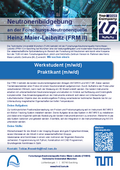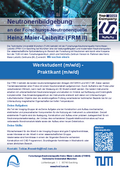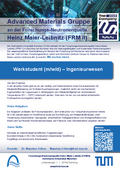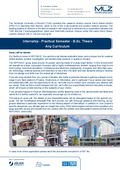Praktika und Studentenjobs
Die Forschungs-Neutronenquelle Heinz Maier-Leibnitz bietet Beschäftigungsmöglichkeiten für Studenten in Form von Pflichtpraktika (z.B. Praxissemester), Studien- und Abschlussarbeiten sowie als studentische Hilfskraft an.
Im Rahmen dieser Tätigkeiten werden beispielsweise Computersimulationen durchgeführt, Komponenten von Neutroneninstrumenten getestet, Software entwickelt, neue Methoden und Konzepte von Geräten erprobt und umgesetzt, Messaufbauten entworfen und wissenschaftliche Messungen durchgeführt. Besonders interessant ist dies für folgende Studienrichtungen: Elektrotechnik, Physikalische Technik, Informatik, Scientific Computing, Physik, Technische Physik, Maschinenbau, Mechatronik, Medizintechnik und Feinwerktechnik.
Es besteht die Gelegenheit, angewandte Forschung hautnah zu erleben und mit Wissenschaftler:innen und Ingenieur:innen interdisziplinär zusammenzuarbeiten. Besonderen Wert legen wir auf den Ausbildungsaspekt.



